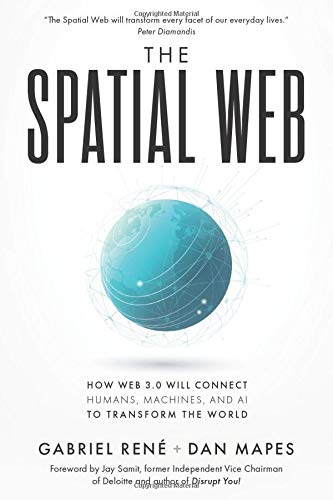The Spatial Web: How web 3.0 will connect humans, machines and AI to transform the world
Have you ever wondered what the future holds? Blade Runner, The Matrix, Star Wars, Avatar, Star Trek, Ready Player One, The Avengers, and many other popular films show us futuristic worlds where holograms, robots, smart devices, virtual avatars, digital transactions, and universe-scale teleportation all work together in sync, combining the virtual and the physical with the mechanical and the biological.It won't be fiction much longer. The Spatial Web paints the same picture of an inevitable future—in the real world. But more importantly, it teaches you how to prepare for it, and leverage it.Science fiction movies, books, and games have done an excellent job describing a future where the digital and physical worlds merge into one. However, none of these visionary fictional works describe exactly how it will be accomplished. It has inspired many of us to ask the same question—How do we enable fantasy to become...reality?The Spatial Web holds the answers. In this book, you will learn...- How exponentially powerful computing technologies are creating a great “Convergence.” - How Augmented and Virtual Reality will enable us to overlay our information and imaginations onto the world. - How Artificial Intelligence will infuse the environments and objects around us with adaptive intelligence. - How the Internet of Things and Robotics will enable our vehicles, appliances, clothing, furniture, and homes to become connected and embodied with the power to see, feel, hear, smell, touch and move things in the world.- How Blockchain and Cryptocurrencies will secure our data and enable real-time transactions between the human, machine, and virtual economies of the future. The book also dives deeply into:- The challenges and shortcomings of the World Wide Web- The rise of fake news and surveillance capitalism in Web 2.0- The risk of algorithmic terrorism, biological hacking, and “fake-reality” in Web 3.0- The threat that emerging technologies pose in the hands of rogue actors--whether human, algorithmic, corporate, or state-sponsored. In response, the book calls for common-sense governance and global cooperation. It calls for business leaders, organizations, and governments to not only support interoperable standards for software code, but for ethical and social codes as well. Authors Gabriel René and Dan Mapes describe in vivid detail how a new “spatial” protocol is required in order to connect the various exponential technologies of the 21st century into an integrated network capable of... - Tracking and managing the real-time activities of our cities- Monitoring and adjusting the supply chains that feed them - Optimizing our farms and natural resources- Automating our manufacturing and distribution- Transforming marketing and commerce- Accelerating our global economies - Running advanced planet-scale simulations and predictions - Bridging the gap between our interior individual reality and our exterior collective oneThe book artfully shifts between cyberpunk futurism, cautionary tale-telling, and life-affirming call-to-arms. It challenges us to consider the importance of today’s technological choices as individuals, organizations, and as a species, as we face a historic opportunity to transform the web, the world, and our very definition of reality. Most surprisingly, this book is not another future-leaning jaunt, teasing us with fantastical predictions of a sci-fi future. Instead, The Spatial Web provides us with the roadmap to get there.


